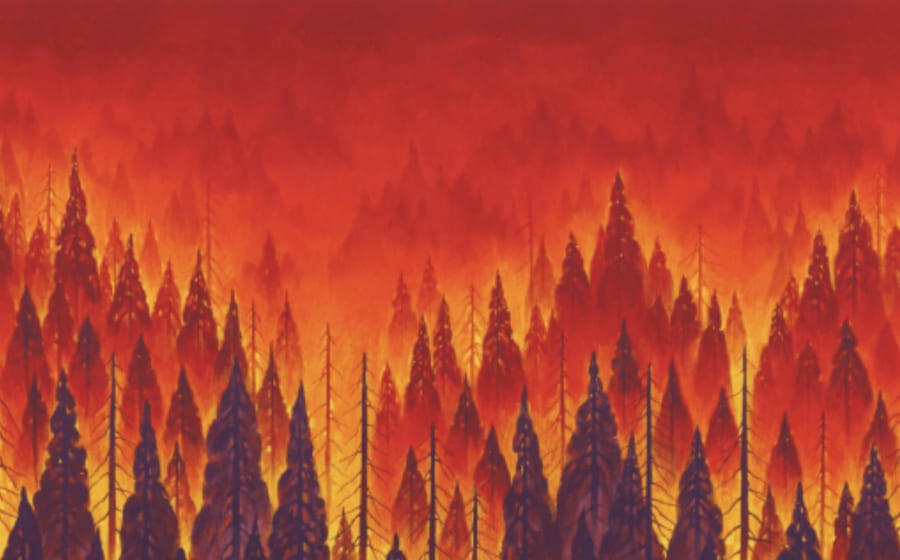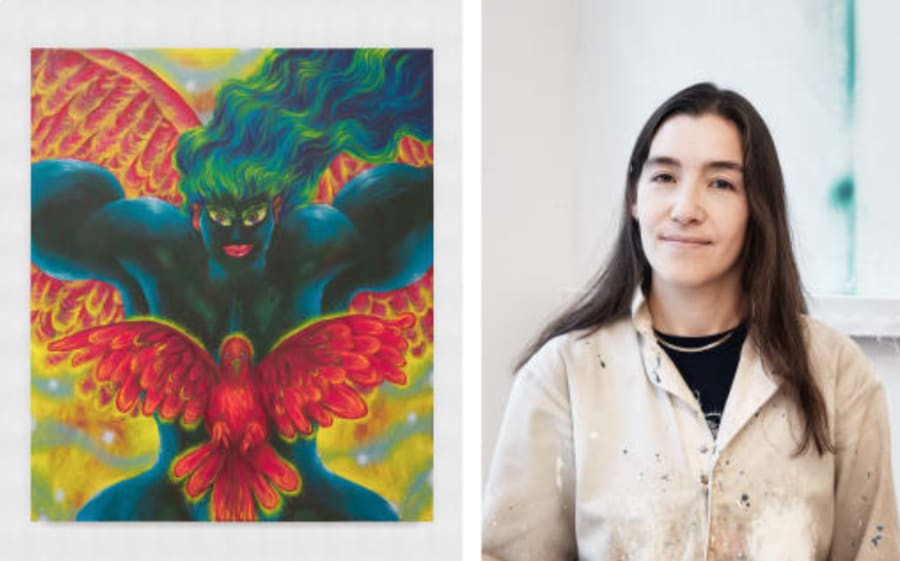Artist Fiza Khatri wants us to remember that figurative painting is not tasked with objective representation. While we might think of a painter committing an act of reportage by looking out at the world and pinning it down in paint, invention inevitably finds its way onto the canvas. Viewers, however, won’t always know where. Khatri calls this art’s ‘fiction of knowability.’
Working primarily with oil and acrylic on canvas, Khatri was born in 1992 in Karachi, Pakistan. They now live and work in New Haven, Connecticut. Khatri makes works based on their observation of people and relationships in their community; paintings like ByeMonthly (2019) and Self portrait as -Bear- Otter (According to Stephano) (2022) offer intimate looks at moments of daily interactions, queer expressions, and intimate friendships. Next month, Mumbai-based gallery Jhaveri Contemporary will present Khatri’s work at Art Basel Hong Kong. Below, the artist reflects on early encounters with art in Karachi, how their practice has evolved since moving to America, and painting in service of fantasy.
‘I don’t think paintings make very good factual records because they aren’t stable repositories of information. Even if they’re referencing things that have happened, there’s so much invention on the surface. There’s a narrative that can be read and not be known.
‘I find it interesting to play with that through fiction and coding. Two figures in proximity to each other already establish a relationship, but there doesn’t need to be any truth to the narrative. My 2022 painting A Gathering (for Billi Aunty) shows a dozen cats hanging out in a garden; they’re all cats that I’ve known at different times and in different places, but they’ve never actually shared space with each other. I wanted to see them together, but it’s total fiction.
‘My father was a photographer. He did everything from fashion photography to portraits, landscapes, and more experimental things. My older sibling and I were his models at home and his images were probably the first images that I really saw. I don’t know that I necessarily thought of them as art – they were just always in the home and a part of our lives.
‘Drawing and painting were things that I always did. I would draw everything around me. At some point I started making paintings referencing my father’s photographs. There wasn’t a moment that I can say I became an artist; it was always something that I felt compelled to do, and at some point, I just stopped questioning it.
‘Art exhibitions and museums weren’t a part of my childhood. In my late teens, I saw a massive mural by [the Pakistani painter, calligraphist, and poet] Sadequain on the ceiling of Frere Hall in Karachi, soon after the building was reopened to the public. The mural was unfinished, which made it more real somehow. I was amazed at seeing evidence of the makings of a work of art. I could see how he was thinking about constructing the image.
‘I mostly saw paintings in books and online. Henri de Toulouse-Lautrec was one of the first artists who struck me; I resonated with his visual language, that post-Impressionist mark-making that emphasized the hand of the artist.
‘My undergraduate studies at Mount Holyoke College in South Hadley, Massachusetts, laid the foundation for many of the ways that I still work. My instructor Matt Phillips opened my mind to the practice of working from observation. It was a direct way to relate to what I was seeing with my body. Through touch, painting became an extension of my sight. That felt so radical, and that slowness and focused attention has stayed with me.
‘Painting portraits from life is a very intimate experience. There is an awareness of someone’s body and a care for them during the process itself. It’s an incredible act of seeing and being seen, a willingness to be witnessed so closely. It’s about sharing space and time, and creating something in that moment of intense embodiment.
‘I’m working on an ongoing self-portrait series. It has almost become a motif for painting – a way to think through surface and material and ideas of representation in an open, boundless way. There’s a freedom and playfulness in painting myself. I’m there, I can just pull up whenever I want – there’s an immediate accessibility.
‘At Yale, I began working with an airbrush, which creates an atmospheric mark that I’ve become very interested in. My mark-making emphasizes the touch of my hand, and the airbrush offers a counterpoint to that. I also began working with museum specimens. I’ve been interested in human and non-human figures and their relationship to the environment. While visiting the university’s Yale Peabody Museum, I came across a collection of endangered Gharial crocodiles preserved in jars stacked on shelves. The crocodiles have been completely severed from their environment and held in an eternally suspended space where their bodies are not allowed to decompose or return to the earth. There’s something really interrupted about their lives, which I wanted to confront and materially contend with. The five-panel work, Return to Water (2023), offers a fantasy of return where I reintegrate them into a fictitious environment composed of landscape elements from what could have been their native ecology in South Asia.’
Fiza Khatri is represented by Jhaveri Contemporary (Mumbai). The gallery will present works by the artist in the Discoveries sector at Art Basel Hong Kong.
Elliat Albrecht is a writer and editor based in Canada. She holds a BFA in Critical and Cultural Practices from Emily Carr University of Art + Design and an MA in Literary and Cultural Studies from the University of Hong Kong.
Full-bleed image: Fiza Khatri, Beside the Flowers (detail), 2024. Courtesy of the artist and Jhaveri Contemporary.


